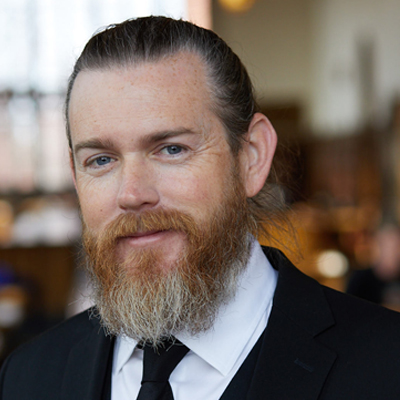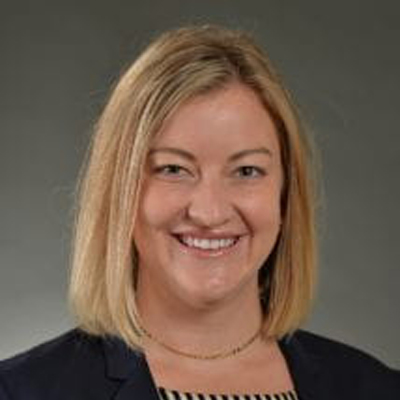Prepared Exclusively for FFI Members
Early Release: December 2020 Issue of FBR
November 20, 2020
W
e are pleased to provide you with an advance look at the December 2020 issue of Family Business Review (FBR).
As an FFI member, you have access to the complete library of FBR articles at no charge.
To access back issues of FBR, follow these instructions:
- Log in to your FFI member account
- Then click: my.ffi.org/page/family-business-review
- Click the link on this page to go to Family Business Review and you will automatically be redirected and logged in to FBR to begin reading.
EDITORIAL
In Their Own Words: A Call for Increased Use of Organizational Narratives in Family Business Research
Jeremy C. Short and G. Tyge Payne
Jeremy C. Short and G. Tyge Payne
The role words and narratives play in understanding rich relationships critical to family business cannot be overstated…[There are ] object lessons in the importance family businesses place on words, as well as how they find it critical to proactively project their own words to make clear their feelings on the issues and values at the heart of their organizations.
Jeremy C. Short
University of North Texas
University of North Texas
G. Tyge Payne
Texas Tech University
Texas Tech University
Articles
Unmasking the Social Ghost in the Machine: How the Need to Belong and Family Business Potency Affect Family Firm Performance
Nastaran Simarasi, David S. Jiang, Franz W. Kellermanns, and Bart J. Debicki
Nastaran Simarasi, David S. Jiang, Franz W. Kellermanns, and Bart J. Debicki
Research Questions
- How does family members’ need to belong impact family firm performance?
- Does family business potency mediate the relationship between the family’s need to belong and firm performance?
Implications for Practice
- Families who experience higher cohesion in their family interactions through their firm generally perceive that their business is more effective in accomplishing its goals.
- Family firm potency resulting from the family’s social affiliation and need to belong likely helps family firms achieve better performance outcomes.
Nastaran Simarasl
California State Polytechnic University
California State Polytechnic University
David S. Jiang
Elon University
Elon University
Franz W. Kellermanns
The University of North Carolina at Charlotte
WHU Otto Beisheim School of Management
The University of North Carolina at Charlotte
WHU Otto Beisheim School of Management
Bart J. Debicki
Towson University
Towson University
Innovation in Family Firms: The Relative Effects of Wealth Concentration Versus Family-Centered Goals
Manuel Becerra, Cristina Cruz, and Chris Graves
Manuel Becerra, Cristina Cruz, and Chris Graves
Research Questions
- What factors drive the extent of innovation in family business?
- How does the owning family’s personal wealth invested in the family firm versus their family-centered goals affect the adoption of innovation strategies?
- To what extent are the effects of wealth concentration and family-centered goals on family business innovation fully independent, or do they have interaction effects?
Implications for Practice
- Having most of the family wealth concentrated in a single firm not only increases risk from an investor’s point of view, but it may also reduce the pursuit of innovation inside family firms.
- To promote innovation strategies, family owners need to ensure that the emphasis on family-centered non-economic goals (e.g., family cohesion) remains strong from generation to generation.
Manuel Becerra
The University of Queensland Business School
The University of Queensland Business School
Cristina Cruz
IE University
IE University
Chris Graves
The University of Adelaide
The University of Adelaide
Organizational Ambidexterity in Family-Managed Firms: The Role of Family Involvement in Top Management
Nadine Kammerlander, Holger Patzelt, Judith Behrens, and Christian Röhm
Nadine Kammerlander, Holger Patzelt, Judith Behrens, and Christian Röhm
Research Questions
- How do family businesses differ in pursuing organizational ambidexterity?
- How does family involvement in top management affect exploration and exploitation in family-managed firms?
- How can diversity theory help understand the effect of family TMT involvement on innovation?
- How do family-centered noneconomic goals of family CEOs affect TMT decision making?
Implications for Practice
- The composition of top management teams affects innovation in family-managed firms: Equal number of family and non-family managers are beneficial for exploration, whereas teams consisting of only family managers or only non-family managers are more effective in exploitation.
- The family CEO’s goals impact decision making in the top management especially regarding innovation. Specifically, a high focus on family-centered, noneconomic goals might induce faultlines in the top management team and hamper effective decision making.
- To ensure that their firms pursue ambidextrous innovation, family CEOs who prioritize family over financial gains of their firms should build a top management team mainly consisting of non-family members, while family CEOs who prioritize the firm’s financial performance should try to create a balanced team out of family and non-family members.
Nadine Kammerlander
WHU Otto Beisheim School of Management
WHU Otto Beisheim School of Management
Holger Patzelt
Technical University of Munich
Technical University of Munich
Judith Behrens
Solvay Brussels School of Economics and Management
Solvay Brussels School of Economics and Management
Christian Röhm
Technical University of Munich
Technical University of Munich
“SEW” What Do We Know and Where Do We Go? A Review of Socioemotional Wealth and a Way Forward
R. Gabrielle Swab, Chelsea Sherlock, Erik Markin, and Clay Dibrell
R. Gabrielle Swab, Chelsea Sherlock, Erik Markin, and Clay Dibrell
Research Questions
- Is the socioemotional wealth construct uni- or multi-dimensional?
- What do we know about the dimensions of socioemotional wealth and how are they (a) related to the overall construct, (b) to one another, and (c) are they substitutable?
- Is the socioemotional wealth construct family firm specific?
Implications for Practice
- Family owners and family firm stakeholders should be aware that decisions related to economic goals can also reinforce noneconomic goals, and vice versa. These goals are not always trade-offs but rather can often complement one another.
- Family gatherings designed to build emotional attachment to the firm, enable younger members to identify with the family firm, while strengthening social ties may be useful for maintaining or acquiring greater levels of SEW, thus buttressing the likelihood of familial renewal and continuity.
- Family firms should be mindful that changes in succession can influence relationships among other SEW dimensions temporally and should be cognizant of the succession process and resulting impact on the SEW endowment.
R. Gabrielle Swab
Towson University
Towson University
Chelsea Sherlock
Louisiana State University
Louisiana State University
Erik Markin
Mississippi State University
Mississippi State University
Clay Dibrell
University of Mississippi
University of Mississippi
Coming next week – a podcast interview with FBR editor, Tyge Payne
Previous Edition
We are pleased to introduce the following FFI members who were granted Fellow status following the 2020 October conference.
Please note that there may be additional Fellows for 2020 at the end of December, following completion of a one or more outstanding requirements. They will be announced in the December 18 issue of FFI on Friday.
NOV-DEC
30-04
30-04
STEP Business Families Special Interest Group Spotlight Sessions
View Details
View Details
DEC
04
04
Watch the GEN Certificate Ceremony, filmed live


















